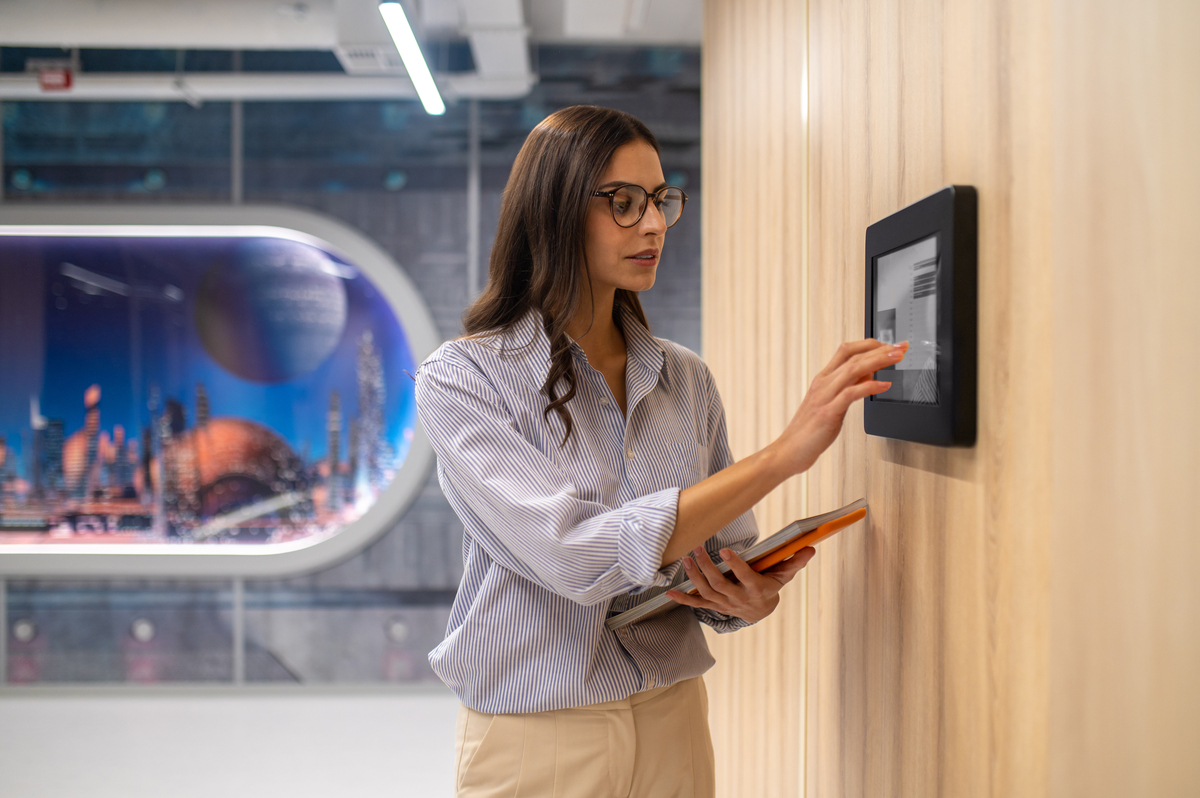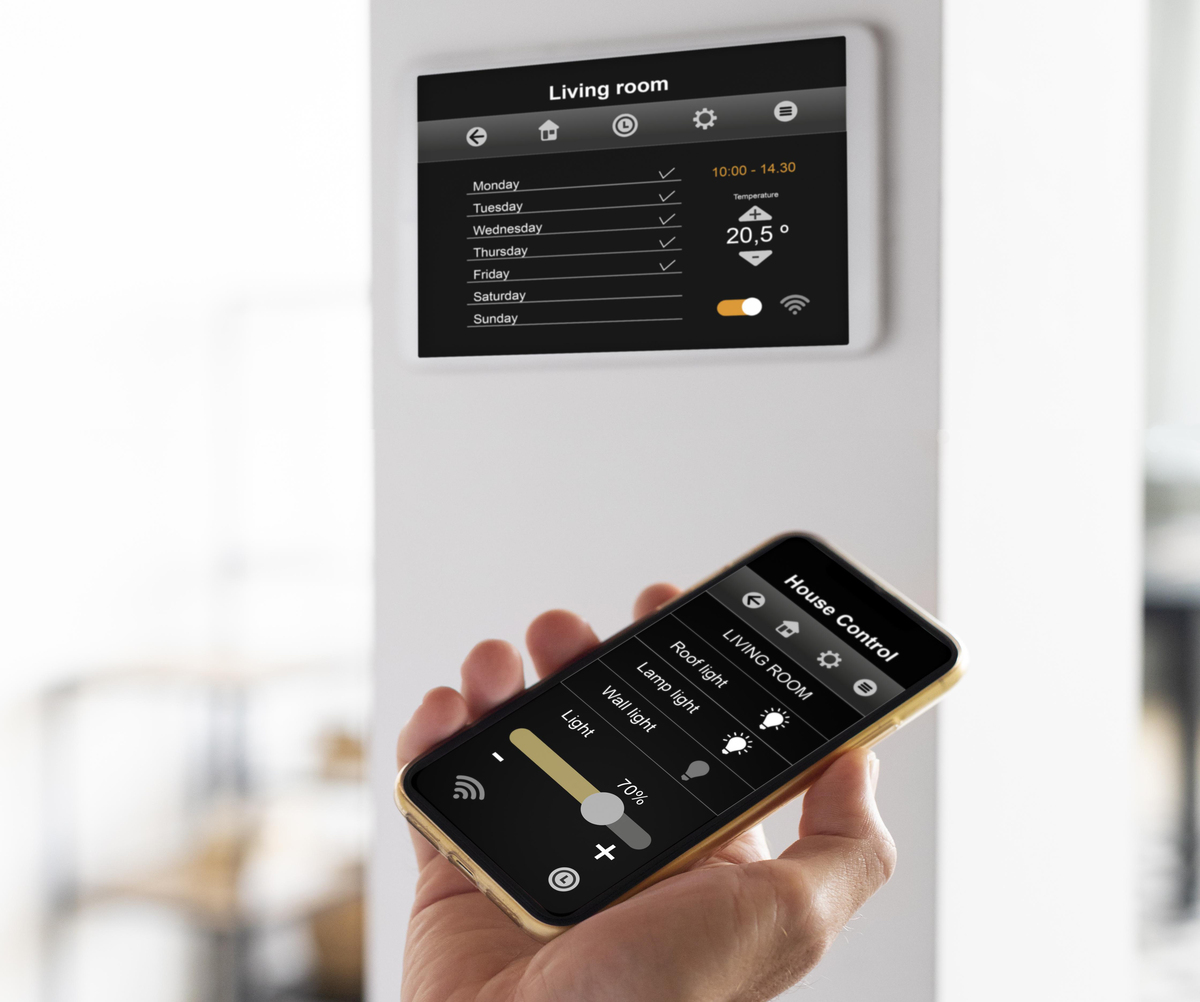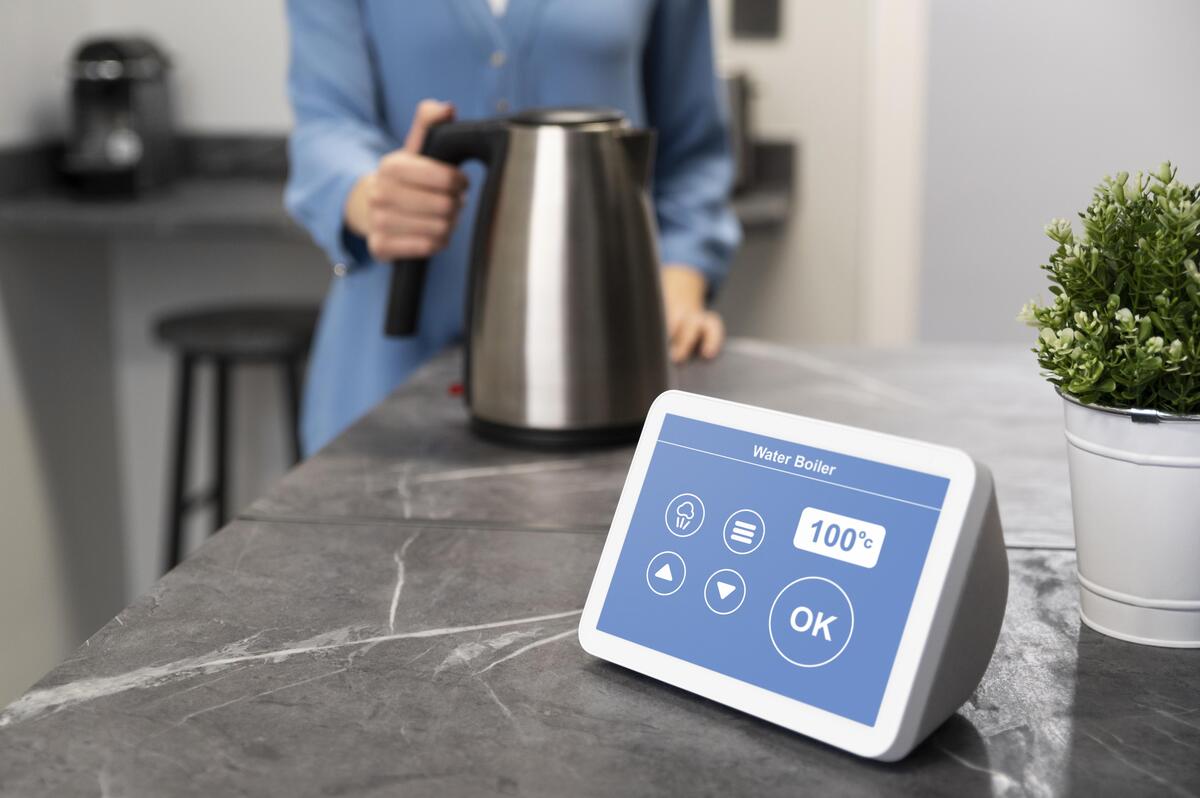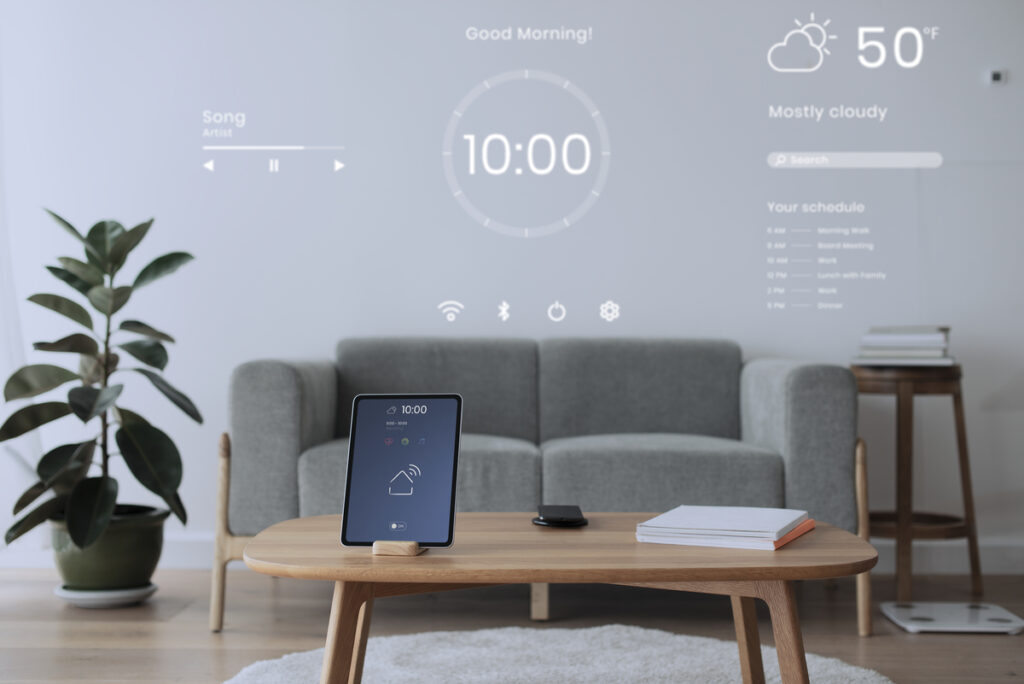Exclusive Neuroject Article: The idea of building automation has emerged as a game-changer in the quickly changing world of modern design and technology. This cutting-edge strategy promises to alter how we interact with our built environment by placing sustainability, energy efficiency, and occupant comfort at the center of design concerns. This modern technology combines cutting-edge technology and intelligent technologies to monitor and regulate a variety of building services, from HVAC and lighting to security and occupancy control.
This article explores the great potential of building automation to optimize resource use, lower carbon footprints, and improve human-centric experiences. We will explore the fundamental factors influencing this trend and how architects and industry leaders are embracing this paradigm change, ranging from cutting-edge sensor networks to AI-powered analytics. To create a sustainable and comfortable future for everyone, it is essential to comprehend the complexities of this technology as the demand for eco-friendly, intelligent buildings grows.
Table of Contents
Defining Building Automation in 2024
Building Automation in 2024 refers to the advanced, interconnected systems within a building that automates and control various functions such as HVAC (Heating, Ventilation, and Air Conditioning), lighting, security, and other systArtificial Intelligence or AI in Construction Industry; Guide to 2024. These Building Automation systems are increasingly becoming more integrated and intelligent due to the advent of IoT (Internet of Things), AI (Artificial Intelligence), and Machine Learning technologies, with an estimated global market size of over $100 billion.
Suggested article’s for reading: IoT in Construction | AI in Construction | Machine Learning in Construction
Here are key features of Building Automation in 2024:
Integration of Systems: In the sphere of Building Automation, the integration of multiple systems and controls into a centralized management platform is paramount. This approach enables seamless control of various subsystems such as HVAC, lighting, energy management, and security, potentially increasing overall building efficiency by up to 30%.
Energy Efficiency: One of the primary goals of this sector is to increase energy efficiency. This includes optimal utilization of energy, reducing energy wastage, and promoting sustainability. It’s estimated that efficient Building Automation can lead to energy savings of 10-20%.
IoT and Connectivity: IoT plays a crucial role in this modern design. There are expected to be over 75 billion IoT devices by 2025, and a significant portion of these will be dedicated to this sector, collecting real-time data about various parameters, such as temperature, humidity, light levels, occupancy, etc., and transmitting this data to the automation system.
Artificial Intelligence and Machine Learning: AI and machine learning technologies allow the Building Automation system to learn from data, identify patterns, and make decisions. Predictive maintenance, for instance, can reduce downtime by up to 45%, which can be performed when the system predicts and alerts about possible future equipment failures.
Remote Control and Monitoring: With advancements in cloud technologies and mobile applications, building managers and occupants can control and monitor these systems remotely. It’s estimated that up to 70% of building managers now use some form of remote monitoring.
Improved Comfort and Productivity: Automated systems within the scope of Smart Buildings are designed to improve the comfort of building occupants by ensuring optimal temperatures, adequate lighting, and good air quality, which can potentially improve worker productivity by up to 15%.
Security: Automation systems often include sophisticated security systems that include video surveillance, access control, alarm systems, and more. Some of these systems can even use AI for facial recognition or detecting unusual activities, with security-related tech expected to grow by 10% annually.
Data Analysis: Advanced Building Automation systems in 2024 are capable of storing and analyzing large amounts of data, providing valuable insights into the operation and efficiency of building systems. Companies that leverage these data insights have reported operational cost savings of up to 20%.
This modern design and technology in 2024 is far beyond simple programmable thermostats or scheduled lighting. It’s a comprehensive, intelligent system that leverages technology to make buildings more efficient, comfortable, and secure.

What Are The Latest Innovations In Building Automation?
In the evolving world of technology, Building Automation is taking giant strides toward unprecedented efficiency and comfort. A global market projected to reach $128.9 billion by 2025, this modern technology is seeing continuous innovation, catalyzed by IoT and AI.
One key innovation in this modern design is the integration of AI and Machine Learning. These technologies enhance building systems’ ability to learn from data, predict future trends, and make autonomous decisions. A study by Memoori anticipates AI could reduce energy costs by 10-20%.
The incorporation of IoT is another groundbreaking advancement. IoT devices are forecasted to reach 4.5 billion by 2024, contributing to real-time data collection and interconnectivity among building systems.
The emphasis on sustainability has also led to green technologies. These environmentally-friendly solutions aim to reduce energy usage and carbon footprint, with the potential to decrease a building’s energy consumption by up to 30%.
Predictive maintenance, a product of AI integration is revolutionizing building system management. It enables proactive maintenance, potentially reducing system downtime by up to 45%.
The growing trend of remote monitoring and control in Building Automation is another noteworthy innovation. With advancements in cloud technology, it’s estimated that about 70% of building managers use remote monitoring for efficient system control.
These latest innovations are reshaping the industry, leading to more efficient, sustainable, and comfortable built environments. This modern technology is no longer a concept of the future, but a rapidly evolving reality of today.
How Building Automation Enhances Energy Efficiency?
This modern construction technology has steadily emerged as a game-changer in enhancing energy efficiency across commercial buildings worldwide. Dating back to the 1970s energy crisis, Building Automation Control Services (BACS) began its journey and has since morphed into a global industry. In 2017, BACS hardware and software sales alone were estimated to be over seven billion US Dollars by BSRIA, a building services consultancy, with additional services likely doubling that figure.
Building Automation’s primary objective remains energy optimization, along with ensuring occupant comfort. However, the balance between energy-saving and maintaining employee comfort poses a significant challenge. BACS usage has been growing by a few percentage points every year in developed countries like the UK, the US, and Germany, but due to the cost and complexity of BACS installations, these solutions are mainly found in medium to large non-residential buildings.
As per BSRIA’s Senior Market Intelligence Analyst, Henry Lawson, beneath the seemingly stable surface of the Building Automation industry, some significant changes are occurring. With an increasing wealth of data from various controllers and field devices, the software has become the fastest-growing component in BACS. Monitoring and analyzing this data enables BACS to identify anomalies such as abnormal energy usage patterns, indicative of inappropriate configuration or malfunctioning devices.
While HVAC remains the primary focus for BACS, increasing interest in integrating other building systems, like lighting and blinds, is evident. However, creating a fully functional ‘green’ building faces several formidable barriers, ranging from the need to demonstrate an attractive ROI to potential investors, to architects’ understanding of the complex relationship between a building’s physical design and its energy performance.
According to Henry, the quest for enhanced energy efficiency will necessitate coordination at every stage, from the building’s inception to its operation. This will only be possible if an organization assigns a responsible person to enforce energy efficiency as a significant organizational priority. Hence, despite its challenges, remains a key player in driving energy efficiency in the modern building environment.

Quantifying Efficiency Gains Through Building Automation
As we delve deeper into the era of digital transformation, “Building Automation” is rapidly reshaping our perception of smart, Sustainable Buildings. It is vital for professionals and stakeholders in real estate, construction, and energy sectors to understand this transformative technology and, even more crucially, the efficiency gains it can provide. This article aims to shed light on how to measure the efficiency improvements offered by Building Automation.
Real-world examples further underline these improvements. According to a 2021 report by Siemens, a global leader in Building Automation, the company’s building technologies reduced the carbon emissions of their clients by approximately 2.1 million tons, which is equivalent to the annual carbon emissions of more than 450,000 cars. This underscores the significant impact that this technology can have on reducing our environmental footprint.
Data analytics further strengthens the role of building automation in energy efficiency. By gathering and analyzing data from the BAS, we can gain valuable insights into the building’s energy usage patterns, inefficiencies, and opportunities for improvement. For instance, analytics can identify trends in energy use that may not be apparent from a cursory examination of the data, like a piece of equipment that uses more energy than it should, or a zone in the building that is consistently over- or under-conditioned.
The actionable intelligence provided by data analytics can drive more efficient use of energy resources, inform better decision-making, and support continual improvement in building performance.
By improving energy efficiency, this modern design can also help buildings achieve energy efficiency certifications, such as LEED (Leadership in Energy and Environmental Design), BREEAM (Building Research Establishment Environmental Assessment Method), or Energy Star. These certifications not only enhance the building’s environmental profile but also can increase its market value.
Successful Integration of IoT In Building Automation
The integration of the Internet of Things (IoT) in building automation is making significant strides, transforming the ways commercial and residential structures function. MarketsandMarkets is projected to reach USD 121.5 billion by 2024, with a significant push from IoT advancements.
A groundbreaking case of IoT is the Edge in Amsterdam, known as the most sustainable building worldwide. Integrated IoT sensors track occupancy, light, and temperature in real-time, calibrating energy consumption accordingly. The outcome is a staggering 70% reduction in electricity usage, a testament to the power of IoT in this smart design.
This modern technology also benefits from predictive maintenance empowered by IoT. Siemens incorporated IoT at its Munich base, leading to a 30% reduction in maintenance costs. By monitoring systems like elevators and HVACs, potential faults are identified and resolved before causing significant damage, thus enhancing building automation’s effectiveness and efficiency.
WeWork, the shared workspace provider, leverages IoT in this sector to maximize user comfort and safety. Sensors track usage patterns to optimize lighting and temperature, increasing user comfort by 20%. Moreover, IoT-based access control systems enhance security, granting entry only to authorized personnel.
The IoT’s incorporation is sculpting a new era in smart buildings, highlighting improved energy management, predictive maintenance, and advanced comfort and security. As technology continues to evolve, we can anticipate further enhancements to building automation, making our buildings smarter and more sustainable.

Technical Challenges In Building Automation Implementation
Building Automation has been growing exponentially, promising a future of smart buildings. However, its implementation poses several technical challenges that building owners and managers need to navigate.
Choosing the right systems. Building Automation offers a myriad of options, making the selection process daunting. The initial step should be to develop a smart building integration plan that identifies business objectives, budgets, and goals. For instance, if the aim is to reduce operational costs, the focus might be on core building systems like lighting, HVAC, and power meters, each connected with sensors and control systems to optimize performance. It is recommended to select systems with open protocols like BACnet, which ASHRAE developed for standardized communication between building automation components.
Creating a programmable platform. Traditionally, mechanical, electrical, and plumbing systems were designed to function independently, using different, often proprietary, communication protocols. A crucial aspect is planning in advance for programming that allows these systems to share data and respond to data from one another, normalizing data from various sources into a centralized platform.
Adopting a team approach for system integration. The building industry traditionally follows a model where each trade develops separate specifications and plans. However, this smart design necessitates a collaborative approach, developing interconnected system platforms where systems communicate. For instance, HVAC and lighting controls can coordinate to optimize energy usage. These can avert potential issues:
- Post-installation support
- Frequently overlooked
- Post-installation support
- Pre-planned support plan
- Providing key performance indicators (KPIs)
- On-site and remote support, training, and commissioning
- System and hardware upgrades
Proper implementation of Building Automation can offer significant monetary benefits in the long run. But if done incorrectly, constant upgrades and fixes become inevitable. Therefore, careful planning, insistence on contractor collaboration, and expert guidance are essential for successful Building Automation implementation.
Emerging Tech Trends In Building Automation
In the era of rapid technological advancement, this modern design is stepping up to the plate, embracing innovative technologies to offer smarter, greener, and safer buildings. In fact, a report by Fortune Business Insights predicts the global building automation market to grow to $48.67 billion by 2026, fueled by groundbreaking technologies like AI, blockchain, digital twins, and renewable energy.
Building Automation is leveraging Artificial Intelligence (AI) in powerful new ways. A study by Deloitte suggests that AI can reduce energy consumption by 10-20%, a significant savings. AI facilitates predictive maintenance, energy optimization, and effective occupancy management, learning and adapting to occupant behavior to optimize comfort and energy use.
In the quest for robust data security, Building Automation is turning to blockchain technology. As per a study by Gartner, blockchain will add a business value of over $176 billion by 2025, providing a decentralized and secure framework that mitigates the risk of cyber-attacks.
Digital twin technology is revolutionizing building management. By creating a virtual model of a physical building, this technology enables real-time simulation, prediction, and optimization of building performance, reducing operational costs and improving disaster management.
Further, the inclusion of renewable energy sources is on the rise. Navigant Research projects the global revenue for solar and wind technologies in smart buildings to exceed $256 billion by 2026. By harnessing these sources, buildings can minimize their carbon footprint and achieve significant energy cost savings.
These tech trends offer a glimpse into the future – a future that promises improved efficiency, sustainability, and security. As technology continues to evolve, so too will the sophistication of building automation systems.
CM1’s commitment to maintaining compliance with GDPR and BSI while interpreting raw data with intelligent algorithms marks this construction startup as a pioneer in the realm of smart infrastructure. The startup’s integration of network protocols to facilitate real-time data transfer underlines its place as a leader among successful construction startups in 2024.

Future Trends And Developments In Building Automation
The landscape of Building Automation is set for transformation, influenced by technological advancements and shifting sustainability regulations. By 2027, Market Research Future forecasts that the global building automation system market will reach a value of $125 billion, largely propelled by these dynamic changes.
At the forefront of this evolution is AI, set to become more deeply ingrained in these systems. Advanced AI models will not only facilitate predictive maintenance but also predict trends, such as energy demand, with greater accuracy. This will significantly improve energy efficiency, ultimately reducing operational costs.
Sustainability regulations will heavily impact the future of Building Automation. As governments worldwide prioritize green initiatives, more stringent regulations will likely emerge, necessitating the adoption of energy-efficient technologies. A shift towards renewable energy sources will be crucial in this context, making zero-energy buildings more than just a concept.
Digital twin technology will also mature, potentially enabling full-scale virtual replicas of cities, supporting urban planning and disaster management. This will beautifully integrate with the broader trend of smart cities, contributing to the development of a cohesive digital ecosystem.
Furthermore, emerging technologies like 5G will revolutionize Building Automation. With its faster data transmission and lower latency, 5G will optimize IoT-based systems, ensuring seamless integration and communication between devices.
In summary, the future of Building Automation lies in sophisticated AI integration, a stronger focus on sustainability, a deeper dive into digital twin technology, and the adoption of 5G. These developments will undeniably play a critical role in the smart city paradigm, leading to more efficient, sustainable, and resilient urban landscapes.
Resources:
BSRIA | Facilities | BuildingsIoT
For all the pictures: freepik



